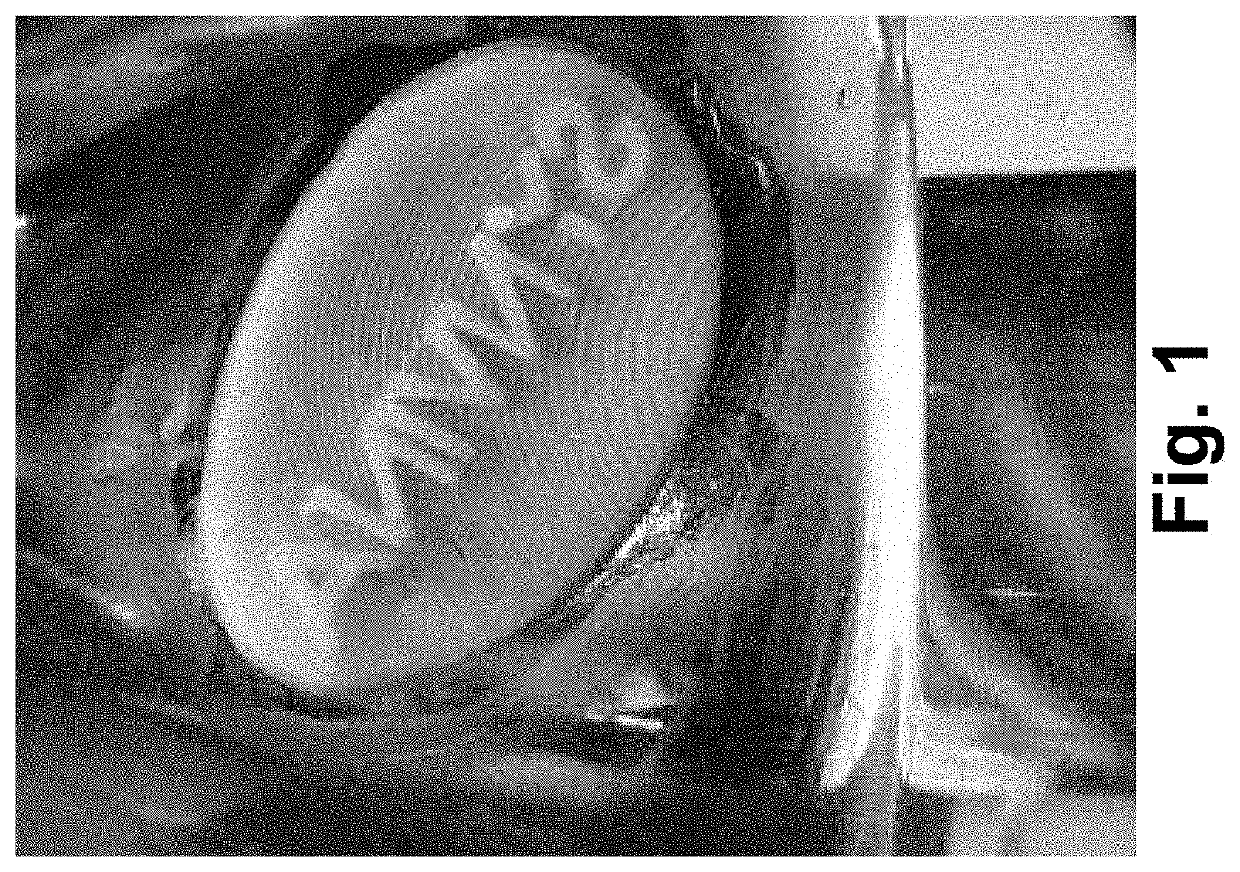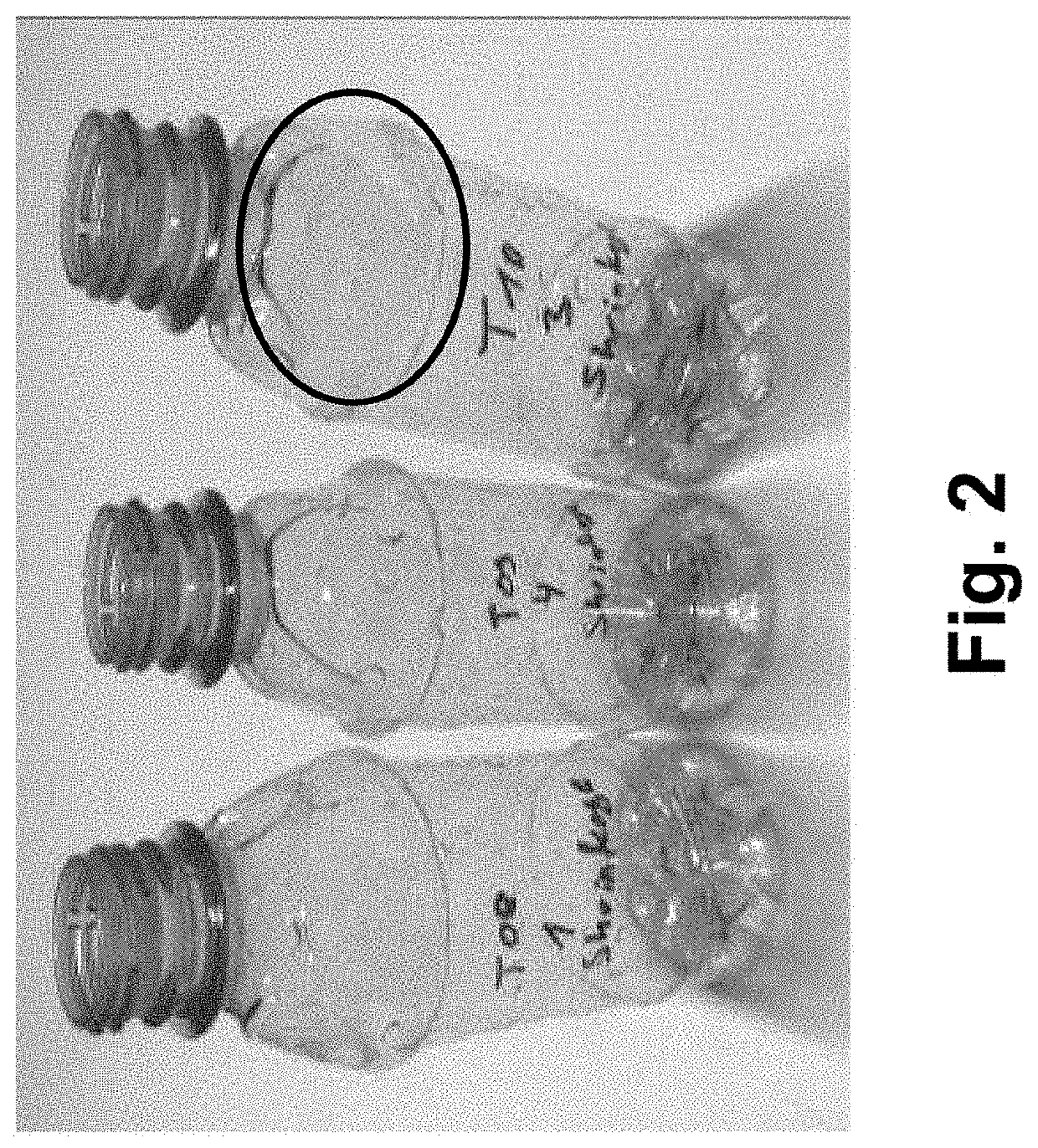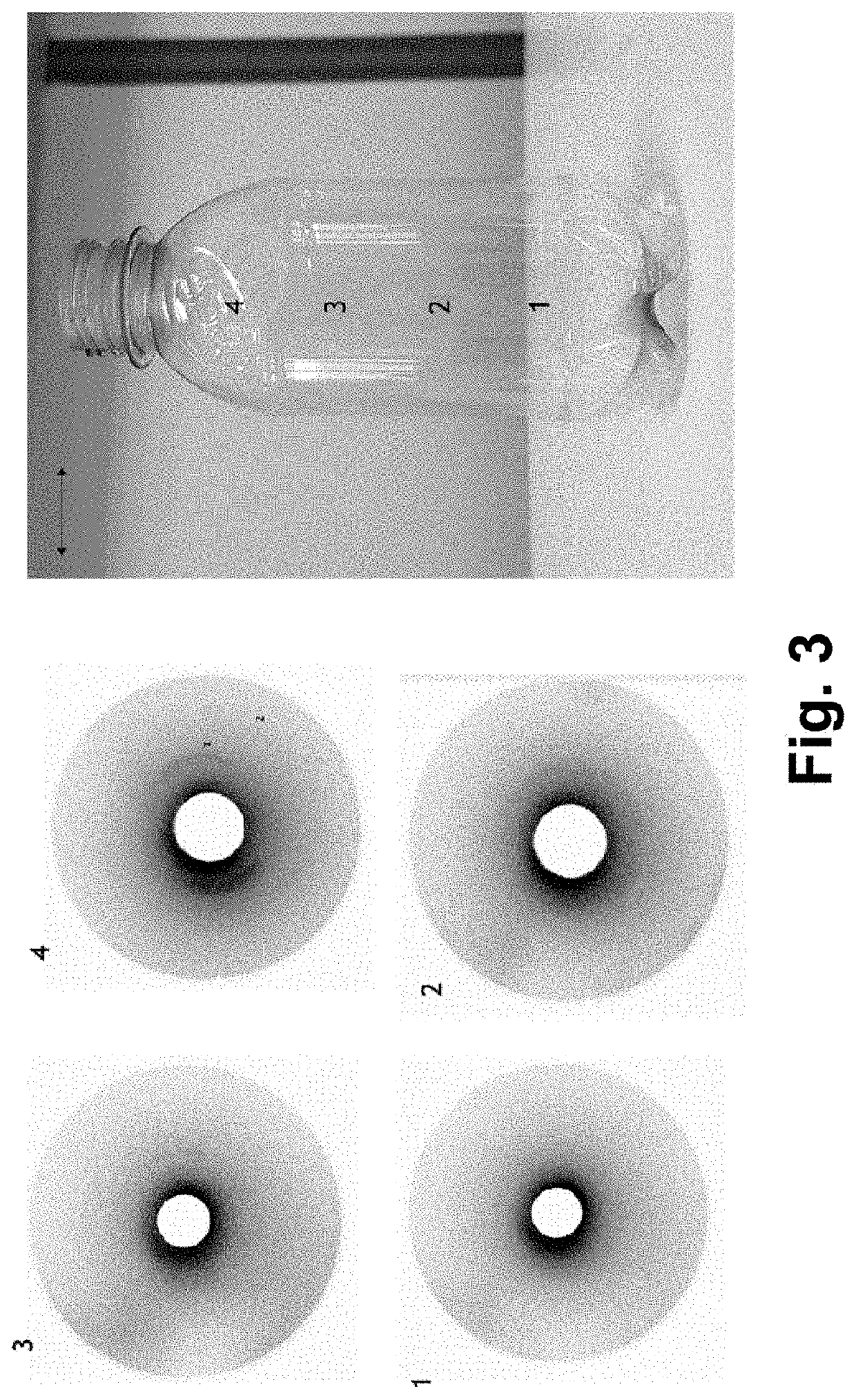Method for fabricating a container and the container
- Summary
- Abstract
- Description
- Claims
- Application Information
AI Technical Summary
Benefits of technology
Problems solved by technology
Method used
Image
Examples
example 1
of Glass Transition Temperature with Reduction of Shrinkage after Uniaxial Stretching
[0047]PEF resin with an IV of 0.89 dL / g was extruded to a sheet with a nominal thickness of 0.7 mm. Subsequently, dogbone shape tensile specimens with a total length of 40 mm and maximum width of 14 mm and a parallel section of 8 mm by 8 mm were milled from the sheet. Each tensile specimen was heated for 5 minutes to obtain a homogenous temperature throughout the specimen before stretching. Subsequently, each specimen was stretched to a draw ratio of 6 and cooled down as fast as possible using compressed air. The stretching device used is a non-commercial one.
[0048]The stretched region of the PEF tensile bars were subjected to different characterization test: DMTA for shrinkage behavior and thermal transitions and Differential Scanning calorimetry (DSC) for crystallinity, type of amorphous phases and thermal transition. The resulting values can be found below. The DSC measurements were carried out u...
example 2
of Relaxation During SBM
[0052]In this experiment a preform of PEF with an IV of 0.92 dL / g was stretch blow molded (SMB) into a bottle of 8 oz (237 mL). Blow molding took place at the preform temperature and at a blow pressure as indicated in Table 2. The equivalent axial strain rate (∈·aτ) values were calculated from the stretch rod speed divided by the height of the preform and corrected to the reference temperature using the WLF equation as shown in the description. The resulting values are indicated in Table 2.
[0053]Several SBM processing parameters were tested and found to affect shrinkage of the resulting PEF container. The results are shown in Table 2.
TABLE 2Bottle CodeB1B2B3B4ProcessingPreform temperature, ° C.109108120108{dot over (ϵ)}aT, s−10.430.630.040.56Shrinkage@ 70° C., %0000@ 80° C., %106.61.47.5@ 90° C., %26292339Refractive IndexΔ Nx0.0580.0540.490.062Δ Ny0.0570.0680.0760.050Δ P0.1150.1220.1250.112n1.551.551.551.55
[0054]Bottles that were blown at different processing...
example 3
[0057]PEF resin with an IV of 0.90 dL / g was extruded to a sheet of 0.3 mm thick. Subsequently, uniaxial specimens were milled from the sheet and stretched at different temperature / stretch rate combinations. After stretching to a draw ratio of 4, the specimen is kept at the stretching temperature for 3 minutes for relaxation. This relaxation time may be unattractive in an industrially viable process. A more preferred period ranges from 0.5 to 20 s. In the table below the DMTA data is shown as measured at a heating rate of 2° C. / min and a frequency of 1 Hz and (tensile) strain amplitude of 0.1%. Table 3 shows values of various indicators for the glass transition temperature as determined from DTMA temperature sweeps at a heating rate of 2° C. / min and a frequency of 1 Hz and tensile strain amplitude of 0.1% on non-stretched (reference) and several samples that have been stretched at different stretching conditions.
TABLE 3Shrink-DMTAageTg,Shrink-Sam-StretchingDSC(maxage,ple{dot over (ϵ)...
PUM
| Property | Measurement | Unit |
|---|---|---|
| Temperature | aaaaa | aaaaa |
| Temperature | aaaaa | aaaaa |
| Temperature | aaaaa | aaaaa |
Abstract
Description
Claims
Application Information
 Login to View More
Login to View More - R&D
- Intellectual Property
- Life Sciences
- Materials
- Tech Scout
- Unparalleled Data Quality
- Higher Quality Content
- 60% Fewer Hallucinations
Browse by: Latest US Patents, China's latest patents, Technical Efficacy Thesaurus, Application Domain, Technology Topic, Popular Technical Reports.
© 2025 PatSnap. All rights reserved.Legal|Privacy policy|Modern Slavery Act Transparency Statement|Sitemap|About US| Contact US: help@patsnap.com



